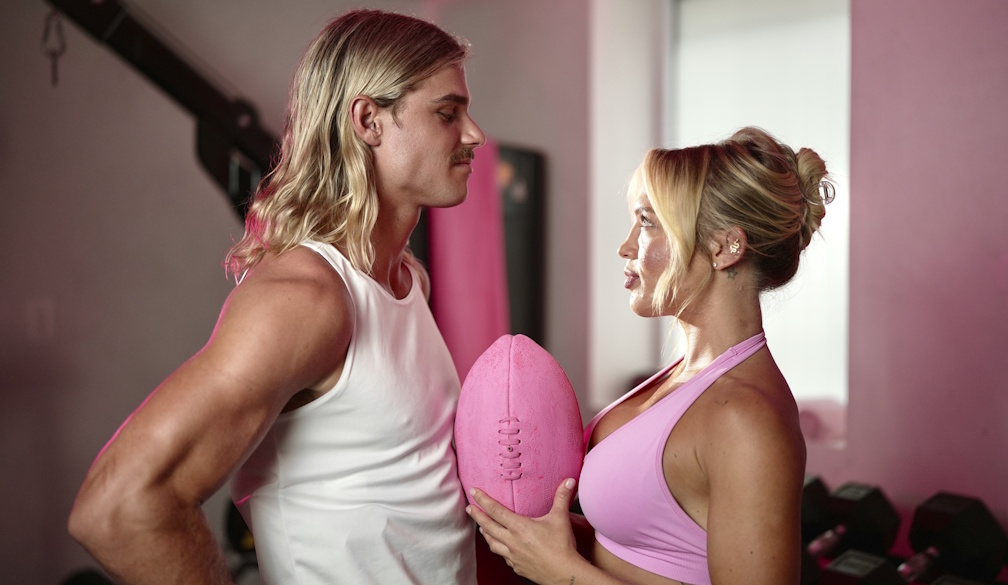Why Your Tennis Game Isn’t Improving (And How to Fix It)

Tennis is a sport that demands precision, endurance, strategy, and mental toughness. Whether you play casually or competitively, you may reach a frustrating point where your progress seems to stall. No matter how much time you spend on the court, your game just doesn’t seem to be improving.
If this sounds familiar, don’t worry—you’re not alone. Many players hit plateaus, but the key is identifying what’s holding you back. Below, we’ll explore the most common reasons why your tennis skills might not be improving and how to break through to the next level.
1. You’re Practicing Without a Plan
Simply hitting balls for hours isn’t enough to make you better. If you don’t have a structured practice plan, you’re likely reinforcing bad habits rather than improving your technique.
Common Mistakes in Practice:
- Repeating the same drills without adjusting technique
- Not focusing on weak areas (e.g., avoiding backhand shots)
- Playing without a clear goal for improvement
How to Fix It:
✅ Work With a Coach – A coach can identify flaws in your technique and provide drills tailored to your weaknesses.
✅ Structure Your Training – Dedicate specific days to serve practice, footwork, volleys, or match play. Focus on different aspects of your game rather than just hitting randomly.
✅ Track Progress – Keep a training journal or use video recordings to monitor improvement.
2. You’re Not Playing Against Stronger Opponents
If you consistently play against the same opponents who are at your level (or weaker), your game won’t develop as quickly as it could. Playing against tougher players forces you to adapt and refine your strategy.
Signs You’re Playing Too Comfortably:
- You win most of your matches easily
- You don’t feel challenged during points
- You avoid higher-level competition because it’s “too hard”
How to Fix It:
✅ Seek Out Tougher Competition – Join a competitive league, challenge higher-ranked players, or participate in local tournaments. We recommend booking a group tennis program in Newcastle if you’re based there to find new opponents!
✅ Analyze Stronger Players – Watch and learn from more skilled opponents. Observe their movement, shot selection, and decision-making.
✅ Push Your Limits – Even if you lose, playing against a stronger opponent will highlight areas for improvement and build resilience.
3. Your Footwork and Movement Are Holding You Back
Great tennis players don’t just hit the ball well—they move well. If you’re struggling to get into position for shots, you’ll always be playing catch-up instead of controlling points.
Common Footwork Problems:
- Being flat-footed and slow to react
- Taking large, inefficient steps instead of small, quick adjustments
- Not recovering to the center of the court after a shot
How to Fix It:
✅ Drills for Better Footwork:
- Ladder Drills – Improves agility and reaction time.
- Side-to-Side Shuffle – Helps with lateral movement.
- Split-Step Timing – Enhances readiness before the opponent’s shot.
✅ Stay on Your Toes – Keep a slight bounce in your stance to react faster.
✅ Improve Your Recovery – After each shot, move back to a neutral position to be ready for the next ball.
4. You’re Too Passive (Or Too Aggressive)
Some players focus too much on just keeping the ball in play, while others try to end points too soon with risky winners. Both approaches can prevent improvement.
Signs You’re Playing Too Passively:
- Hitting without depth or power
- Waiting for your opponent to make mistakes instead of controlling the point
- Staying too far behind the baseline
Signs You’re Playing Too Aggressively:
- Trying to hit winners on every shot
- Making frequent unforced errors
- Rushing into poor shot selections
How to Fix It:
✅ Develop a Balanced Playstyle – Learn when to rally and when to attack.
✅ Construct Points Thoughtfully – Use angles, deep shots, and variation to set up opportunities instead of forcing risky winners.
✅ Practice Playing Outside Your Comfort Zone – If you’re too passive, work on aggressive net play. If you’re too aggressive, focus on rally consistency.
5. Your Mental Game Needs WorkTennis is as much a mental sport as a physical one. If you struggle with confidence, frustration, or nerves, it will impact your performance.
Mental Roadblocks That Hurt Improvement:
- Getting frustrated after losing points
- Choking under pressure
- Lacking focus during long rallies
- Overthinking every shot
How to Fix It:
✅ Practice Mindfulness – Focus on the present point instead of dwelling on mistakes.
✅ Use Positive Self-Talk – Replace negative thoughts (“I always miss my backhand”) with constructive ones (“I’m improving my backhand with every shot”).
✅ Simulate Match Pressure – Practice playing under stress by setting goals like “win three points in a row before I can leave.”
6. Your Equipment Might Be Holding You Back
Using the wrong racquet, string tension, or grip size can prevent you from playing at your best.
Equipment Issues That Affect Performance:
- Racquet too heavy or too light
- Incorrect grip size leading to discomfort
- Strings that lack control or power
How to Fix It:
✅ Get a Professional Racquet Fitting – A coach or pro shop can help you find the right racquet and string setup for your style.
✅ Experiment With String Tension – Lower tension gives more power, while higher tension provides control.
✅ Check Your Shoes – Tennis-specific shoes offer better traction and lateral support compared to regular sneakers.
7. You’re Not Cross-Training
If you’re only playing tennis and neglecting other types of training, your endurance, strength, and flexibility may be limiting your performance.
Best Cross-Training Activities for Tennis:
✅ Strength Training – Builds power for serves and groundstrokes. Focus on leg and core exercises.
✅ Cardio Workouts – Improves stamina for long matches. Try interval running or cycling.
✅ Flexibility Training – Prevents injuries and enhances movement. Yoga and dynamic stretching work well.
8. You’re Not Learning From Your Mistakes
If you keep making the same errors—double-faulting under pressure, hitting short balls, or struggling with volleys—it means you’re not analyzing your game effectively.
How to Fix It:
✅ Record Your Matches – Watching yourself play will reveal weaknesses that aren’t obvious in the moment.
✅ Get Feedback From a Coach – A fresh perspective can highlight areas for improvement.
✅ Set Small, Specific Goals – Instead of just “getting better,” focus on fixing one issue at a time (e.g., reducing double faults).
9. You’re Expecting Instant Results
Tennis improvement takes time. If you’re getting frustrated because progress feels slow, remember that skill development is a long-term process.
How to Fix It:
✅ Be Patient – Progress in tennis isn’t linear; there will be ups and downs.
✅ Celebrate Small Wins – Notice incremental improvements, like better footwork or improved consistency.
✅ Stay Committed – Long-term dedication always beats short-term frustration.
Final Thoughts
If you’re feeling stuck in your tennis game, it’s likely due to one (or more) of these factors. The good news? With the right adjustments, you can break through your plateau and start seeing improvements.
The key is to practice smarter, play against better competition, improve footwork, strengthen your mental game, and train your body properly. Tennis is a journey, and every setback is an opportunity to grow.
Now, grab your racquet and hit the court with renewed focus!























